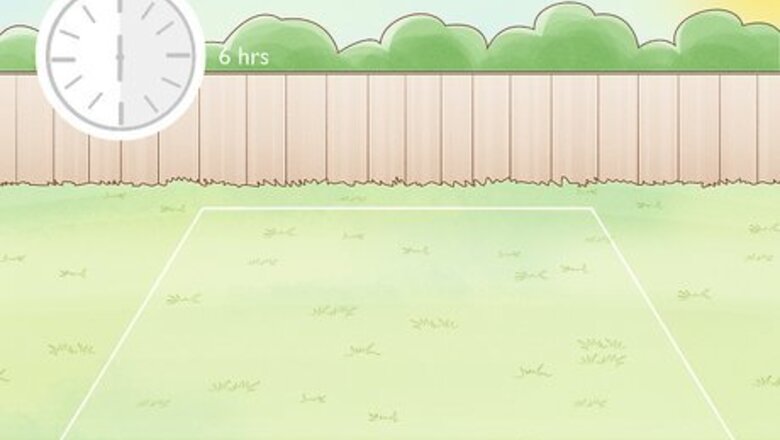
views
Planting Needs

Choose a spot that gets sunlight for 6 hours a day. Watch your planting site throughout the day to make sure it gets enough sunlight throughout the day. It’s okay if your site has partial shade at a few points during the day, but it will not grow in areas that are in full shade.

Test the soil for a pH between 8.6–9.0. If your soil isn’t within the range that sweetgrass prefers, either find a different location or amend it until it’s the correct pH. Sweetgrass can grow in almost any type of rich or sandy soil. You can easily grow sweetgrass in USDA Zones 3–9. Sweetgrass doesn’t grow well in soils that have a lot of clay.

Clear other vegetation from the area to turn the soil. Use a shovel to dig up any other plants or grasses where you want to grow your sweetgrass. That way, they won’t compete for light, water, space, or nutrients. Then, drag a hoe through the soil to break it apart and find any remaining roots. Remove any of the old root systems just so they don’t grow back. Removing vegetation and turning the soil also removes packed clumps of soil so it’s easier for your sweetgrass to develop roots.

Pack or roll the soil so it has a firm surface. Pull a weighted garden roller over the soil to flatten and pack it down. Otherwise, you can use a tamper to press the soil down by hand. Compact the soil until you only see light footprints when you walk over the site.
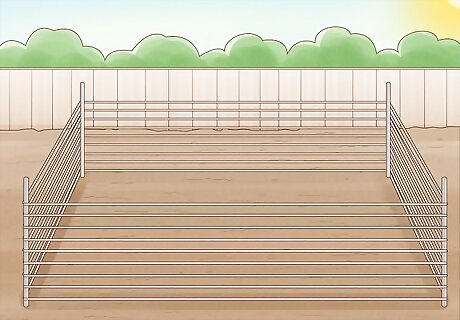
Put a wire fence around your site to protect sweetgrass from large pests. Since sweetgrass has an enticing vanilla scent, the new shoots might attract hungry rabbits or gophers before you have a chance to harvest it. Install a fence made from chicken wire that extends above and below ground so pests can’t jump or burrow into your garden. Dogs may also roll around in sweetgrass, so be careful allowing pets near your garden. Sweetgrass doesn’t have any other natural pests or diseases.
Divisions
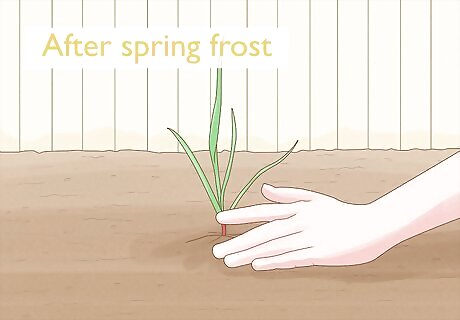
Wait until after the last frost in spring to plant sweetgrass. Check online or talk to someone at a local gardening store to find out when you can expect the last frost of the season. Wait until there isn’t any risk of freezing temperatures, since your sweetgrass might not produce new growths if it’s too cold when you plant it. If you live in the US, you can check your last expected frost date here: https://www.almanac.com/gardening/frostdates.
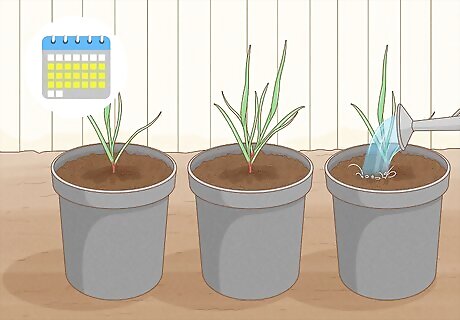
Water sweetgrass in a container for at least 2–3 weeks to establish roots. Buy a pot of sweetgrass shoots from your local nursery a few weeks before you want to put them in the ground. Leave the pot of sweetgrass in a shaded area and water it daily. That way, your grass will develop stronger roots and are more likely to survive after you transplant them. Sweetgrass will survive in a pot for up to a few months if you aren’t able to transplant them right away.
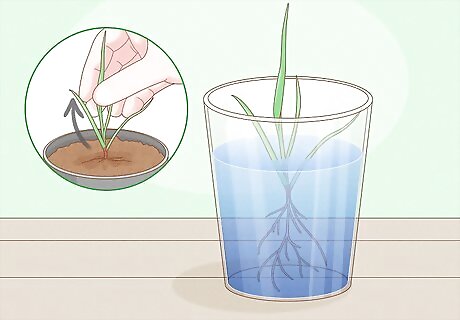
Pull the sweetgrass out of the container and soak the roots in water. Gently hold the bases of the grass stalks and slowly ease the soil and roots out of the pot. Fill a bowl with cool water and lower the root mass into it. Carefully break the soil apart from the roots with your fingers, and make sure you don’t damage any of the root structures. This ensures the roots make good contact with the soil in their new bed so they’re more likely to grow.
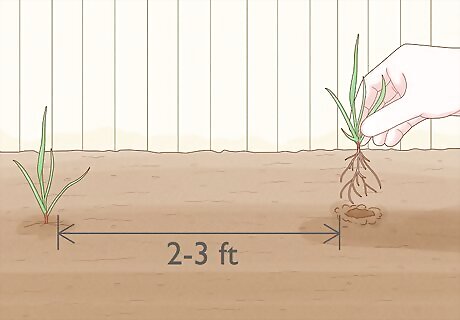
Plant your sweetgrass in a hole slighter larger than its root mass. Use a shovel to dig a hole in your planting area. Make sure you can fit the entire root structure in the hole so there’s room to fill soil in around it. Position the clump of sweetgrass in the middle of the hole and press it down gently against the soil. If you’re planting multiple sweetgrass clumps in a row, keep them spaced about 2–3 ft (0.61–0.91 m) apart from the centers if their root masses so they have room to grow and fill in. It usually takes 1–2 years for the sweetgrass to fill in the space between clumps.
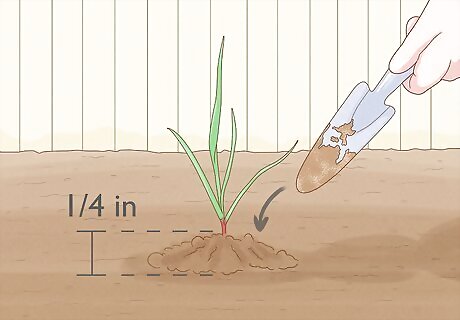
Cover the roots with ⁄4 in (0.64 cm) of loose soil. You can use soil that you have leftover from digging your hole or just use fresh potting mix to cover the roots. Spread the soil in a loose and even layer over the entire root system so it stays underground. Leave any leafy green foliage uncovered so it continues growing. You don’t need to pack the soil down when you’re transplanting divisions.

Trim the grass leaves to 3–4 in (7.6–10.2 cm). Lift the ends of the grass out of the way and use a pair of garden snips to cut the top foliage from the plant. That way, your sweetgrass will focus its energy on growing stronger roots. This also helps prevent your sweetgrass from developing moisture stress.
Seeds

Plan on seeding sweetgrass after the last frost in spring. Sweetgrass seeds sprout best in late spring after there’s no more risk of cold temperatures. Check online for the last expected frost date in your area and wait until then to start germinating your seeds.

Wet the soil so it’s moist 1 in (2.5 cm) below the surface. Dampen the soil with a watering can, sprinkler, or showerhead hose attachment and let the water absorb into the ground. Push your finger into the soil about 1 in (2.5 cm) to see if it feels wet, and continue watering if it doesn’t. Avoid adding so much water that it forms puddles on the surface of the soil, or else your seeds won’t germinate.

Spread about 50 seeds for every 1 sq ft (0.093 m). Sweetgrass seeds are really small, so it’s okay if you don’t count them out precisely. Sprinkle the seeds on the surface of the soil so you distribute them evenly. Continue adding seeds to fill in the rest of your planting area. You can buy sweetgrass seeds online or from your local plant nursery. Only use seeds that are firm when you squeeze them between your fingernails. Otherwise, they may not be ripe enough.
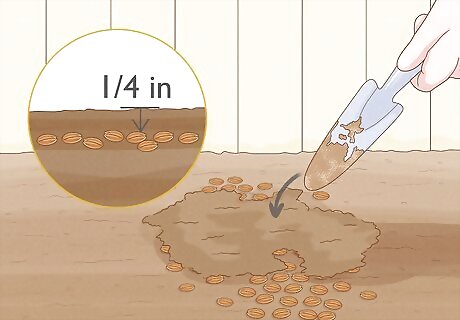
Pack the seeds down with ⁄4 in (0.64 cm) of topsoil. Take leftover soil that you dug up from the area or use fresh potting mix as your top cover. Spread the soil over the seeds, making sure it doesn’t get any deeper than ⁄4 in (0.64 cm). Then, gently press down on the soil so it makes firm contact with all of the seeds and promotes better germination. You can also use a garden roller to press the soil down more efficiently. You can buy a roller online or from your local gardening store.

Water the soil lightly every day until seedlings sprout. Wet the area with a watering can to help keep your seeds moist and ensure they make good contact with the soil. Be careful not to use so much water that the soil or seeds wash away. Keep the soil moist every day so your seeds are more likely to germinate successfully. After about 10–14 days, you’ll see green shoots sprouting up from the soil. Your seeds will not germinate if they dry out. Sweetgrass seeds only have about a 30% germination rate, so you may not see any growths at all. If you have trouble germinating sweetgrass seeds, try planting divisions instead.
Care and Maintenance

Water the sweetgrass so the soil stays moist but not soaked. Sweetgrass naturally grows in moist soils and won’t tolerate droughts very well. Every few days, poke your finger into the soil near your sweetgrass to see if it feels wet to the touch. If it doesn’t, then water it deeply with a watering can. Only wet the soil enough so it doesn’t form puddles on the surface. Be careful not to overwater your sweetgrass since it could develop root rot. You may not need to water your sweetgrass if you have a lot of precipitation.
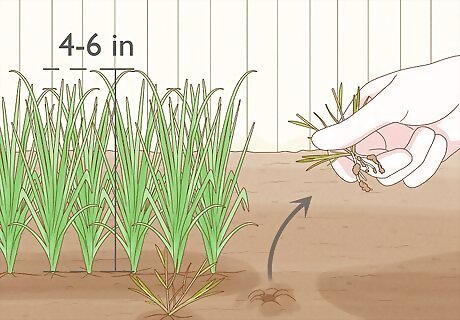
Pull weeds when your sweetgrass is 4–6 in (10–15 cm) tall. Wait until your sweetgrass has some established growth so you don’t accidentally damage it. Grab the base of the weed and gently pull it out from the soil. Try to pull out the entire root structure of each weed so it doesn’t grow back again later.
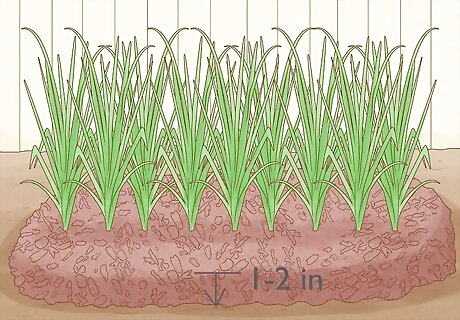
Cover the soil with 1–2 in (2.5–5.1 cm) of mulch. Choose something like shredded cedar chips for your mulch to help get rid of weeds and keep the soil moist. Spread your mulch evenly around your sweetgrass until you’ve covered the entire growing area.

Apply an all-purpose fertilizer after your sweetgrass has grown for 1 year. You can use any standard 10-10-10 fertilizer for your sweetgrass. Follow the application instructions on the fertilizer packaging based on the size of your growing area. Spread the granules in the soil and immediately water them to help your sweetgrass absorb the nutrients. Avoid using fertilizer, especially ones that contain nitrogen, within the first year since it might promote weed growth instead.
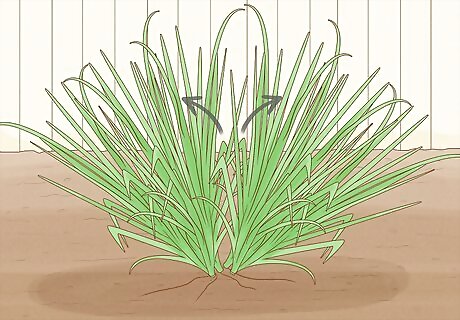
Divide sweetgrass if you want to propagate more shoots. Wait until the late fall or winter to separate your sweetgrass. Dig up a clump of sweetgrass using a shovel, making sure to leave some behind to grow back in. Make sure the division you take has a rhizome, which is a thick horizontal root, or else it won’t propagate. Sweetgrass will continue growing and spreading if you leave it alone.
Harvest
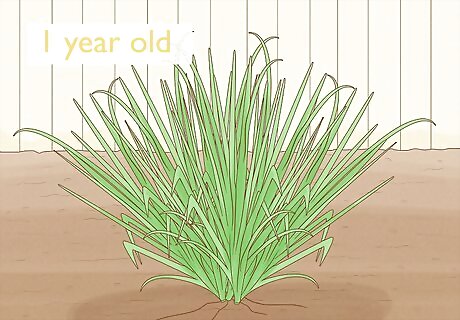
Wait until 1 year after planting to begin harvesting. You probably won’t have enough sweetgrass after the first growing season to harvest, so let it continue growing for at least a year. Even if you think you have a lot of sweetgrass, it may not have developed a strong root structure and may not grow back next year.
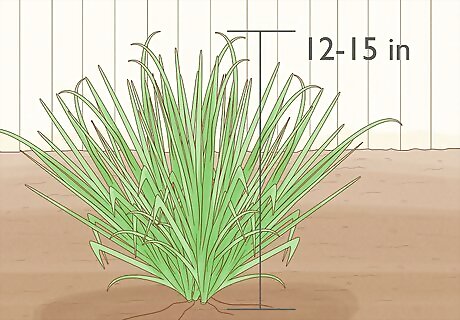
Collect sweetgrass when it gets 12–15 in (30–38 cm) tall. Since you’ll usually braid or weave sweetgrass after you harvest it, wait until it reaches a usable height. You may be able to harvest in the middle of the growing season, but it depends on the temperature and weather conditions in your area. You’ll usually get 2–3 harvests every year in ideal growing conditions.
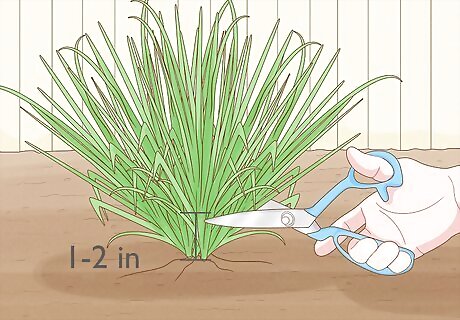
Cut the grass with snips so you leave 1–2 in (2.5–5.1 cm) of stem. Lift the tops of the grass leaves out of the way so you can see the bases of the stems. Place the stem inside the jaws of your garden snips and gently squeeze them together to cut the grass. Always leave at least 1–2 in (2.5–5.1 cm) of stem leftover so your sweetgrass grows back. You can also try pinching and twisting the base of the stem to harvest sweetgrass without snips, but you could damage the roots.
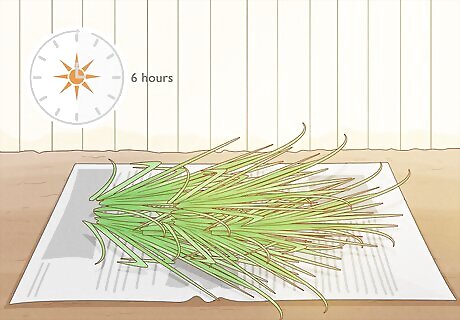
Lay the leaves in the sun to dry for 6 hours. Set your harvested leaves on a tarp or tray in an area that gets direct sunlight. Every 40 minutes, flip the leaves over so they can dry evenly. After about 6 hours, they’ll have an aromatic vanilla smell and work well for braiding, weaving, or burning as incense.
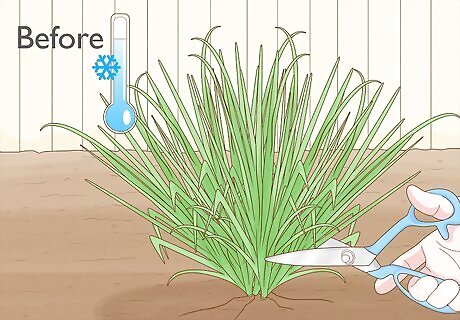
Make a final harvest in the late fall before freezing temperatures. Wait until the sweetgrass dries out and has brown leaves. Trim your sweetgrass down to 1–2 inches (2.5–5.1 cm) one last time so there isn’t any leafy foliage above ground. That way, your sweetgrass will harden off for the winter so it can grow back next spring. Sweetgrass is a perennial, so you don’t have to replant it the following year.











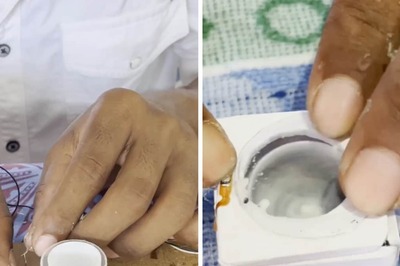







Comments
0 comment